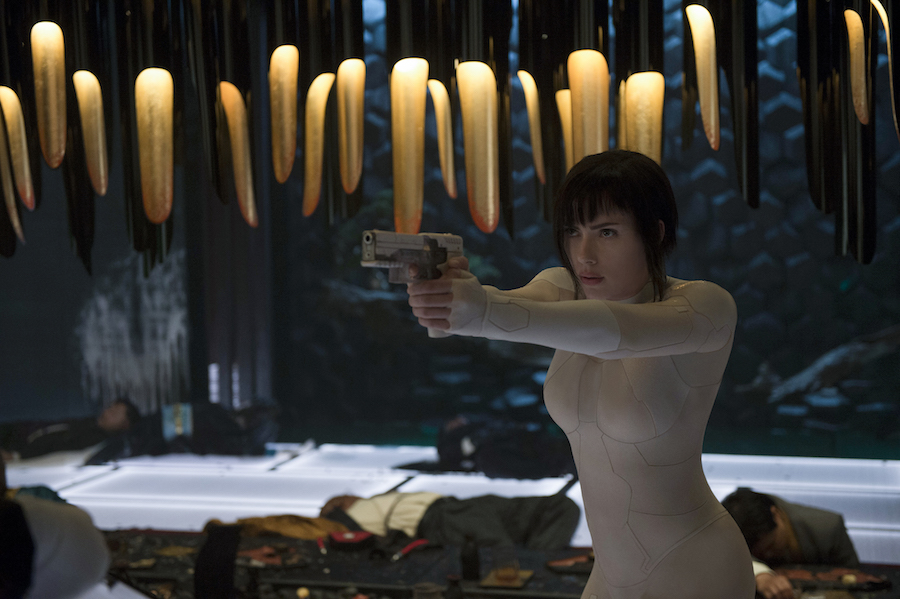‘Ghost in the Shell’ The very embodiment of the American remake of something foreign, the new “Ghost in the Shell” is like a late-comer to a party it itself started. You can blame a good deal of modern blockbuster cinema on Mamoru Oshii’s 1995 anime (adapted from the beloved manga). Word is, when they were trying to get the money for “The Matrix,” the Wachowskis simply screened the cyberpunk classic and said something to the effect of “We want to do that.” “Avatar,” “A.I.,” “Ex Machina” — all owe it a fancy dinner. It’s a husk that’s been picked apart by buzzards, its remains now regurgitated onto multiplex screens because Americans don’t like to watch movies from other countries. Considering that, it’s amazing how watchable the new “Ghost in the Shell” turns out to be. Freely mixing in bits from the original film, its superior 2004 sequel and its various TV shows, the new version, like the old, follows the exploits of a gang of robocops working for a counter-terrorism outfit in tricked-out deep future Tokyo. While most from the world of tomorrow are at least part-robot, the agent known only as The Major (Scarlett Johansson, with a ’do Shannyn Sossamon would have worn in the early aughts) is the first that’s all-synthetic — a brain wiped of its memories that’s been implanted in the body of, well, something that looks like Scarlett Johansson. While investigating a series of assassinations, the Major slowly realizes the case may lead her to discover her true identity. RELATED: “Ghost in the Shell” and 10 other cases of Hollywood white-washing This last plot thread wasn’t in the original, making this “Ghost in the Shell” if not essential then at least not not essential. It goes its own way — or, rather, it molds a classic until it conforms to modern blockbuster shape. As it turns the brand into an origin story in reverse, favorite bits from the original are kept; the bits that might alienate mass audiences — chiefly all that damned philosophizing — are cut down or eliminated. It’s a streamlining and a brain-drain, retaining the sleek, busy look, the funereal mood, even the clunky anime dialogue. (The sorta-villain, played by Michael Pitt with a Max Headroom stutter, introduces himself with the words “I am that which you seek to destroy.”) Its one arguable improvement — apart from the random inclusion of Juliette Binoche, slipping actual humanity into this computerized product, plus Takeshi Kitano, who’s so badass he’s the only one still speaking Japanese — is also the thing that’s made it a controversy-magnet. As our bot-hero, Johansson is so steely and charismatic you can periodically forget that this is yet another case of Hollywood “white-washing.” In a way, Johansson is even perfectly cast: It re-confirms that she is, after “Her,” “Under the Skin” and “Lucy,” the movies’ reigning queen of humanoids and post-human characters. Of course, in another way, she’s simply the wrong person for the job. Follow Matt Prigge on Twitter @mattprigge
Director: Rupert Sanders
Stars: Scarlett Johansson, Pilou Asbaek
Rating: PG-13
3 (out of 5) Globes
‘Ghost in the Shell’ is another film where ScarJo kills it as a humanoid

Paramount Pictures


















